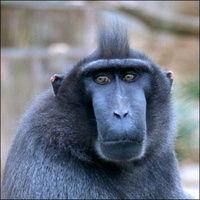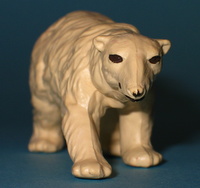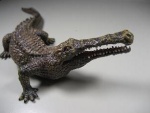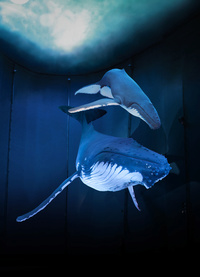| | Mathison Museum of Natural History |  |
|
+17Birdsage Bonnie Saarlooswolfhound widukind Joliezac spacelab Pardofelis landrover Megaptera lucky luke rogerpgvg Jill George pipsxlch Duck-Anch-Amun Kikimalou Roger 21 posters |
|
| Author | Message |
|---|
bmathison1972

Country/State : Salt Lake City, UT
Age : 52
Joined : 2010-04-12
Posts : 6710
 |  Subject: Re: Mathison Museum of Natural History Subject: Re: Mathison Museum of Natural History  Tue Oct 12, 2021 8:20 am Tue Oct 12, 2021 8:20 am | |
| Species: Ranatra chinensis Mayr, 1865 About the Figure: Manufacturer: F-toys Series: Creatures of the Waterside Year of Production: 2008 Size/Scale: Total figure length 9.5 cm. Body length (minus appendages and respiratory siphon) 4.2 cm, within scale 1:1 Frequency of species in toy/figure form (at time of posting): Unique Miscellaneous Notes: Unique heteropterans; a rare treat indeed! The figure is removable from its habitat-style base; this same base design was used for two other species in the set. About the Animal: Geographic distribution: East Asia (India, Myanmar, China, Korea, Russia, Japan) Habitat: Lentic, including lakes, ponds, unmaintained swimming pools, often around aquatic vegetation Diet: Aquatic insects, tadpoles, small fish IUCN Status (at time of posting): Not Evaluated Miscellaneous Notes: Ranatra species overwinter as adults in submerged leaf litter and debris. Eggs are laid in the spring and summer. Nymphs molt four times before becoming adults later in the summer and early fall. All stages are predaceous, the prey determined by the size of the instar. [You must be registered and logged in to see this image.] |
|
  | |
widukind

Country/State : Germany
Age : 48
Joined : 2010-12-30
Posts : 45745
 |  Subject: Re: Mathison Museum of Natural History Subject: Re: Mathison Museum of Natural History  Tue Oct 12, 2021 11:42 am Tue Oct 12, 2021 11:42 am | |
| |
|
  | |
Caracal

Country/State : France
Age : 65
Joined : 2018-10-24
Posts : 7252
 | |
  | |
bmathison1972

Country/State : Salt Lake City, UT
Age : 52
Joined : 2010-04-12
Posts : 6710
 |  Subject: Re: Mathison Museum of Natural History Subject: Re: Mathison Museum of Natural History  Wed Oct 13, 2021 6:40 am Wed Oct 13, 2021 6:40 am | |
| - Caracal wrote:
  Is it a mantidae? Is it a mantidae? No; there are no aquatic mantids (to my knowledge). Next up: Species: Delias mysis (Fabricius, 1775) (Union Jack; red-banded Jezebel) About the Figure: Manufacturer: Club Earth Series: Butterflies to Go Year of Production: unknown Size/Scale: Wingspan 7.0 cm, within scale 1:1 for a larger specimen. Frequency of species in toy/figure form (at time of posting): Very rare [see below] Miscellaneous Notes: The Club Earth butterflies are marked with the common name on the underside of the wings. The figure on the left is by Club Earth; the one of the right is from a set by an unknown manufacturer. This set of 'unknown' butterflies consists of 12 species that are nearly identical to those produced by Club Earth. The only real difference is that they lack the common names printed on the underside of the figures. Otherwise, the quality of plastic and paint applications are nearly just as good as the CE figures. It is possible Club Earth was commissioned to make these for another distributor, or Club Earth and another company bought the rights to the same sculpts (or, these figures are just blatant knockoffs of the CE figures, who knows?). Interestingly, the 'unknown' company mixed up two of the paint jobs. If you look at the figures in this picture, the sculpts are not 100% identical. That is because they painted the sculpt for the monarch as a Union Jack, and vice versa (you may remember this from when I reviewed the two monarchs back on April 25, 2021). About the Animal: Geographic distribution: Northern Australia, Indonesia (Aru Islands; Merauke region, New Guinea) Habitat: Rainforests, mangroves, swampland Diet: Larvae feed on plants in the genus Dendrophthoe (mistletoe); adults take nectar from flowers IUCN Status (at time of posting): Not Evaluated Miscellaneous Notes: Delias mysis is an extremely variable species, especially with regards to the color on the underside of the wings. As such, many subspecies have been described over the years. In 2008, D. lara was given full species status, with four additional subspecies, for most populations occuring throughout New Guinea. Delias mysis proper is now confined to northern Australia, with additional populations on the Aru Islands and Merauke region of extreme southwest New Guinea; both species overlap in the Merauke region. Without having the underside of the wings painted, these figures could represent either D. mysis or D. lara; however, they are good examples of D. mysis proper, so there is no need to question or change their identity. [You must be registered and logged in to see this image.] |
|
  | |
Pardofelis

Country/State : Spain
Age : 40
Joined : 2019-01-12
Posts : 2144
 |  Subject: Re: Mathison Museum of Natural History Subject: Re: Mathison Museum of Natural History  Wed Oct 13, 2021 7:03 am Wed Oct 13, 2021 7:03 am | |
| - Caracal wrote:
  Is it a mantidae? Is it a mantidae? Ces't a punaise mon ami :) _________________ My collection:- (Details):
Homemade: 106
CollectA: 54
Colorata: 31
Safari LTD: 29
Schleich: 20
Papo: 16
Kaiyodo: 13
Mojo Fun: 8
Ikimon/Kitan Club: 6
Southland Replicas: 6
Bullyland: 4
PNSO: 3
CBIOV: 2
Eikoh: 2
Yujin: 2
Takara Tomy:1
Nayab: 1
Happy Kin: 1
Natural History: 1
Science & Nature: 1
Total: 307 |
|
  | |
Caracal

Country/State : France
Age : 65
Joined : 2018-10-24
Posts : 7252
 |  Subject: Re: Mathison Museum of Natural History Subject: Re: Mathison Museum of Natural History  Wed Oct 13, 2021 7:57 am Wed Oct 13, 2021 7:57 am | |
| OK thank you Blaine and Pardo! :) |
|
  | |
widukind

Country/State : Germany
Age : 48
Joined : 2010-12-30
Posts : 45745
 |  Subject: Re: Mathison Museum of Natural History Subject: Re: Mathison Museum of Natural History  Wed Oct 13, 2021 11:25 am Wed Oct 13, 2021 11:25 am | |
| |
|
  | |
Kikimalou
Admin

Country/State : Lille, FRANCE
Age : 60
Joined : 2010-04-01
Posts : 21169
 |  Subject: Re: Mathison Museum of Natural History Subject: Re: Mathison Museum of Natural History  Wed Oct 13, 2021 11:44 am Wed Oct 13, 2021 11:44 am | |
| Ranatra chinensis  I love this kind of alien, it is always a great pleasure to discover so many rare and incredible model. Thank you Blaine  |
|
  | |
bmathison1972

Country/State : Salt Lake City, UT
Age : 52
Joined : 2010-04-12
Posts : 6710
 |  Subject: Re: Mathison Museum of Natural History Subject: Re: Mathison Museum of Natural History  Thu Oct 14, 2021 6:38 am Thu Oct 14, 2021 6:38 am | |
| Species: Buergeria buergeri (Temminch et Schlegel, 1838) (Kajika frog; Buerger's frog) About the Figure: Manufacturer: Kaiyodo Series: Natural Monuments of Japan Year of Production: 2003 Size/Scale: Base 4.3 cm long. Snout-to-vent length about 3.8 cm, within 1:1 scale for a small male Frequency of species in toy/figure form (at time of posting): Very rare Miscellaneous Notes: Some assembly is required and the frog is not removable from its base. About the Animal: Geographic distribution: Japan Habitat: Riparian areas in montane forests Diet: Tadpoles eat algae; adults eat invertebrates IUCN Status (at time of posting): Least Concern Miscellaneous Notes: Buergeria buergeri is popular as a pet in Japan; in the Edo period they were kept in special 'Kajika' cages. The name kaijika comes from the sound it makes, reminiscent of a deer ( ojika). [You must be registered and logged in to see this image.] |
|
  | |
Caracal

Country/State : France
Age : 65
Joined : 2018-10-24
Posts : 7252
 | |
  | |
widukind

Country/State : Germany
Age : 48
Joined : 2010-12-30
Posts : 45745
 |  Subject: Re: Mathison Museum of Natural History Subject: Re: Mathison Museum of Natural History  Thu Oct 14, 2021 11:20 am Thu Oct 14, 2021 11:20 am | |
| |
|
  | |
bmathison1972

Country/State : Salt Lake City, UT
Age : 52
Joined : 2010-04-12
Posts : 6710
 |  Subject: Re: Mathison Museum of Natural History Subject: Re: Mathison Museum of Natural History  Fri Oct 15, 2021 6:50 am Fri Oct 15, 2021 6:50 am | |
| Species: Bathothauma lyromma Chun, 1906 (lyre cranch squid; glass squid) About the Figure: Manufacturer: Safari Ltd. Series: Deep Sea Creatures TOOB Year of Production: 2014 Size/Scale: Figure length 9.0 cm. Mantle length 4.0 cm for a scale of 1:1.5-1:2.5 for a paralarva (see below) Frequency of species in toy/figure form (at time of posting): Unique Miscellaneous Notes: This figure represents the paralarva stage of the squid (the paralarva is a planktonic stage between the hatchling and subadult). Also interesting is the inclusion of this stage is a set featuring 'deep sea' creatures, as it's the adult that lives in the lower depths (see below). About the Animal: Geographic distribution: Worldwide in tropical and subtropical oceans Habitat: Pelagic, at depths of 100-1250 meters Diet: Paralarvae feed on zooplankton; adults are predaceous IUCN Status (at time of posting): Least Concern Miscellaneous Notes: The paralarva stage shown here usually lives in the water column between 100-300 meters. As they mature, they live deeper in the ocean, with adults being essentially benthic at the lower depths. [You must be registered and logged in to see this image.] |
|
  | |
Caracal

Country/State : France
Age : 65
Joined : 2018-10-24
Posts : 7252
 | |
  | |
widukind

Country/State : Germany
Age : 48
Joined : 2010-12-30
Posts : 45745
 |  Subject: Re: Mathison Museum of Natural History Subject: Re: Mathison Museum of Natural History  Fri Oct 15, 2021 3:08 pm Fri Oct 15, 2021 3:08 pm | |
| |
|
  | |
bmathison1972

Country/State : Salt Lake City, UT
Age : 52
Joined : 2010-04-12
Posts : 6710
 |  Subject: Re: Mathison Museum of Natural History Subject: Re: Mathison Museum of Natural History  Sat Oct 16, 2021 7:32 am Sat Oct 16, 2021 7:32 am | |
| Species: Dorcus hopei binodulosus Waterhouse, 1874 About the Figure: Manufacturer: Kabaya Series: Insect Directory Year of Production: unknown Size/Scale: Base 5.5 cm long. Body length (including mandibles) 4.4 cm, within scale 1:1 Frequency of species in toy/figure form (at time of posting): Very common Miscellaneous Notes: This is the second time we've seen D. h. binodulosus in the Museum; it's probably the third most commonly represented species in my collection (certainly top 5). This figure has a habitat-style base (as do all the figures in the Insect Directory collection) from which it can be removed. About the Animal: Geographic distribution: Japan, Korean Peninsula Habitat: Broadleaf forests Diet: Larvae breed in rotting wood; adults feed on tree sap IUCN Status (at time of posting): Not Evaluated Miscellaneous Notes: Dorcus hopei binodulosus is very popular in the beetle-breeding hobby and is easy to rear. [You must be registered and logged in to see this image.]
Last edited by bmathison1972 on Sun Dec 19, 2021 9:55 am; edited 1 time in total |
|
  | |
bmathison1972

Country/State : Salt Lake City, UT
Age : 52
Joined : 2010-04-12
Posts : 6710
 |  Subject: Re: Mathison Museum of Natural History Subject: Re: Mathison Museum of Natural History  Sun Oct 17, 2021 9:16 am Sun Oct 17, 2021 9:16 am | |
| Species: Idolomantis diabolica (Saussure, 1869) (giant Devil's flower mantis) About the Figure: Manufacturer: Bandai Spirits Series: Insects in the World Year of Production: 2021 Size/Scale: Total figure height 19.0 cm. Body length 13.0 cm, 1:1 scale for a large female specimen (based on the length of the antennae, this figure is female) Frequency of species in toy/figure form (at time of posting): Unique Miscellaneous Notes: To date, all of the Bandai Spirits insects from their 2020 and 2021 collections are in the 1:1 scale. Despite its size, no assembly is required. It stands on its own just fine, but comes with a clear acrylic block to aid in support (could be especially helpful over time as the terminal portions of the legs are not as hard as the body). About the Animal: Geographic distribution: East-central Africa Habitat: Rainforests Diet: Flying insects IUCN Status (at time of posting): Not Evaluated Miscellaneous Notes: Idolomantis diabolica is one of the largest, if not the largest, species of flower-mimicking mantids. It preys almost exclusively on flying insects, as it spends most of its time motionless, looking like a flower; it does not actively pursue and hunt like many other mantids. [You must be registered and logged in to see this image.] |
|
  | |
bmathison1972

Country/State : Salt Lake City, UT
Age : 52
Joined : 2010-04-12
Posts : 6710
 |  Subject: Re: Mathison Museum of Natural History Subject: Re: Mathison Museum of Natural History  Mon Oct 18, 2021 7:14 am Mon Oct 18, 2021 7:14 am | |
| Species: Lucanus cervus (Linnaeus, 1758) (European stag beetle) About the Figure: Manufacturer: K&M International Series: European Garden Nature Tube Year of Release: 2006 Size/Scale: Body length (including mandibles) 4.6 cm, roughly 1:1.5-1:2 for a major male Frequency of species in toy/figure form (at time of posting): Uncommon Miscellaneous Notes: This is the second time we've seen L. cervus in the Museum. K&M International released both 'European' and 'American' versions of Garden Tubes in 2006, with very different species compositions. Lucanus elaphus (the American cousin to L. cervus) was not included in the American version. Also, the overall quality appears better in the European set. About the Animal: Geographic distribution: Europe, east to the Middle East and Central Asia Habitat: Old-growth hardwood forests Diet: Larvae feed in rotting wood of hardwood trees, particularly Quercus (oak), but also Tilia (lime), Fagus (beech), Acer (maple), Populus (poplar), and Fraxinus (ash), among several others; also rotting timber, bark chippings, compost heaps in gardens, and other detritus. Adults feed on nectar and tree sap. IUCN Status (at time of posting): Near Threatened Miscellaneous Notes: Larvae of L. cervus require large, old trees in which to develop. The destruction of old-growth forests throughout Europe has lead to a substantial decline in the beetle's population. It is extinct in some European countries and very rare in many others. It is now protected throughout much of its range. [You must be registered and logged in to see this image.] |
|
  | |
rogerpgvg

Country/State : UK
Age : 54
Joined : 2016-04-29
Posts : 3894
 |  Subject: Re: Mathison Museum of Natural History Subject: Re: Mathison Museum of Natural History  Mon Oct 18, 2021 7:53 am Mon Oct 18, 2021 7:53 am | |
| The Bandai mantis is absolutely stunning! You have taken an amazing photo of it as well. My favourite photo in the museum so far (and there were many stunning photos preceding it). |
|
  | |
bmathison1972

Country/State : Salt Lake City, UT
Age : 52
Joined : 2010-04-12
Posts : 6710
 |  Subject: Re: Mathison Museum of Natural History Subject: Re: Mathison Museum of Natural History  Tue Oct 19, 2021 6:26 am Tue Oct 19, 2021 6:26 am | |
| - rogerpgvg wrote:
- The Bandai mantis is absolutely stunning! You have taken an amazing photo of it as well. My favourite photo in the museum so far (and there were many stunning photos preceding it).
Thanks rogergyv Next up: Species: Sula nebouxii Milne-Edwards, 1882 (blue-footed booby) About the Figure: Manufacturer: Safari Ltd. Series: Wings of the World Year of Production: 2017 Size/Scale: Height 6.5 cm. Measured along spine, body length approximately 10.5 cm for a scale of 1:7.7 Frequency of species in toy/figure form (at time of posting): Rare Miscellaneous Notes: Safari made a smaller version of this species for their Galapagos and Pacific TOOBs, but in a different posture. About the Animal: Geographic distribution: East Pacific; breeds along the Sea of Cortez, coastal Central and northern South America, and the Galapagos Islands Habitat: Pelagic; breeds on arid coastal islands Diet: Fish IUCN Status (at time of posting): Least Concern Miscellaneous Notes: Sula nebouxii does not build a nest; eggs are laid in a shallow depression on the ground. Egg clutches vary from 3-5 eggs, but the eggs are not laid at the same time, so the chicks hatch at different times. This sometimes results in siblicide whereby the chick born first will kill subsequent hatchlings when food is scarce. [You must be registered and logged in to see this image.] |
|
  | |
Roger
Admin

Country/State : Portugal
Age : 50
Joined : 2010-08-20
Posts : 35835
 |  Subject: Re: Mathison Museum of Natural History Subject: Re: Mathison Museum of Natural History  Tue Oct 19, 2021 10:42 am Tue Oct 19, 2021 10:42 am | |
| How many many blue! I have this funny creature too. I think it was a good idea for Safari to release it, it works nicely with their painting style. |
|
  | |
Joliezac

Country/State : New Jersey, USA
Age : 22
Joined : 2021-04-26
Posts : 2428
 |  Subject: Re: Mathison Museum of Natural History Subject: Re: Mathison Museum of Natural History  Tue Oct 19, 2021 12:15 pm Tue Oct 19, 2021 12:15 pm | |
| I love this figure!
_________________
Jolie
Animal Ark Website
Animal Figure Photography Website
|
|
  | |
Megaptera

Country/State : Germany
Age : 34
Joined : 2017-11-11
Posts : 1950
 |  Subject: Re: Mathison Museum of Natural History Subject: Re: Mathison Museum of Natural History  Tue Oct 19, 2021 4:43 pm Tue Oct 19, 2021 4:43 pm | |
| Wow, the Mantis is incredible. I really like all the details of it. |
|
  | |
Saarlooswolfhound
Moderator

Country/State : USA
Age : 28
Joined : 2012-06-15
Posts : 12055
 |  Subject: Re: Mathison Museum of Natural History Subject: Re: Mathison Museum of Natural History  Tue Oct 19, 2021 11:11 pm Tue Oct 19, 2021 11:11 pm | |
| THAT MANTIS!!! Gorgeous model, I really love it. Great presentations again! The bird is a nice model too. It gets critiqued often, but I like my model very much.  _________________ -"I loathe people who keep dogs. They are cowards who haven’t got the guts to bite people themselves."-August Strindberg (However, anyone who knows me knows I love dogs [You must be registered and logged in to see this image.] ) -“We can try to kill all that is native, string it up by its hind legs for all to see, but spirit howls and wildness endures.”-Anonymous |
|
  | |
Kikimalou
Admin

Country/State : Lille, FRANCE
Age : 60
Joined : 2010-04-01
Posts : 21169
 |  Subject: Re: Mathison Museum of Natural History Subject: Re: Mathison Museum of Natural History  Wed Oct 20, 2021 1:01 am Wed Oct 20, 2021 1:01 am | |
| The Giant Devil's flower mantis is really incredible and the pic too  Beautiful  I am waiting for mine ! The Blue-footed booby is nice too, I miss it because having the Furuta is enough for me but it is still a temptation. |
|
  | |
bmathison1972

Country/State : Salt Lake City, UT
Age : 52
Joined : 2010-04-12
Posts : 6710
 |  Subject: Re: Mathison Museum of Natural History Subject: Re: Mathison Museum of Natural History  Wed Oct 20, 2021 6:38 am Wed Oct 20, 2021 6:38 am | |
| Thanks all! The mantis is a stunning piece! Next up: Species: Passer montanus (Linnaeus, 1758) (Eurasian tree sparrow) About the Figure: Manufacturer: Kitan Club Series: Nature Techni Colour - Nature of Japan Vol. 3 Year of Production: 2015 Size/Scale: Body length 5.4 cm for a scale of approximately 1:2.5 Frequency of species in toy/figure form (at time of posting): Rare Miscellaneous Notes: I cannot remember if assembly is required (and it's hard to tell looking at it!). Kaiyodo also made this species for their Choco Q Animatales series and Eikoh made it for their Miniatureplanet series. About the Animal: Geographic distribution: Native to much of Palearctic; introduced to and established in Australia, eastern USA (St. Louis area), Sardinia, Indonesia, Philippines, and Micronesia Habitat: Wetlands, open woodlands, fields, coasts, gardens, disturbed areas Diet: Seeds, sometimes invertebrates; young are fed invertebrates by the parents IUCN Status (at time of posting): Least Concern Miscellaneous Notes: In some places, especially places where it is not native, P. montanus is considered an agricultural pest, as it damages cereal crops and eats animal feed and stored grain. In other places its considered beneficial by eating and harvesting insect garden and crop pests. [You must be registered and logged in to see this image.] |
|
  | |
Sponsored content
 |  Subject: Re: Mathison Museum of Natural History Subject: Re: Mathison Museum of Natural History  | |
| |
|
  | |
| | Mathison Museum of Natural History |  |
|
